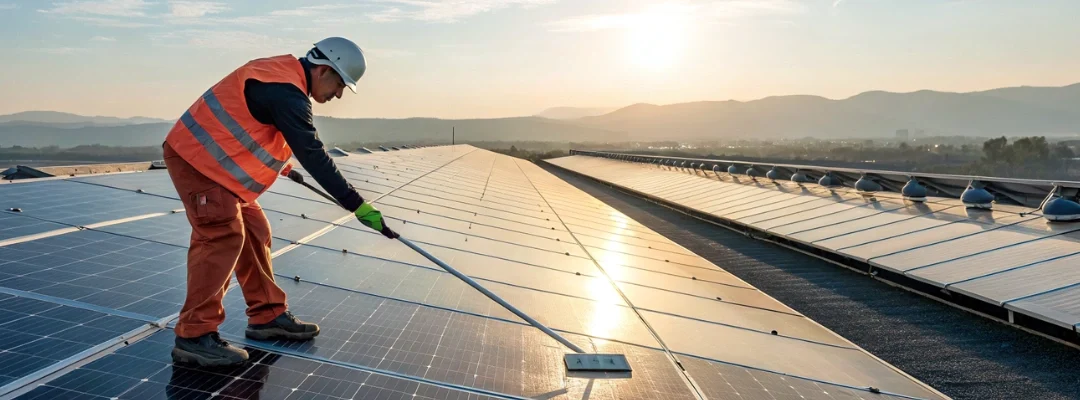What is PV Cleaning?
Photovoltaic cleaning is the technical name for the cleaning of solar panels in order to maintain the desired efficiency and effectiveness of the solar panels. Dust, debris, dirt and bird droppings are the most common way in which the solar panels get accumulated with unwanted substances and need to be cleaned frequently.
Steps to clean the solar panels and ensure their maintenance:
- Identify the right kind of cleaning tools: It is extremely important to ensure that the right kinds of tools and equipment’s are used in cleaning the solar panels. These analyses will help save time, cost and resources will maximizing the efficiency of the cleaning cycle. There are various types of cleaning systems that can be used such as cleaning tractors for solar farms, cleaning robots for commercial units and a manual cleaning process for t\domestic and residential solar plants. The soaps used for wet cleaning should be mild and the brushes should be soft bristled to avoid any scratches. Warm water is best suited for cleaning the panels and allowing them to dry naturally under sunlight is advisable.
- Setting a cleaning cycle and schedule: It is important to determine how often a solar panel needs to be cleaned. If the solar panels are not cleaned at appropriate times, it can reduce the efficiency of the output produced. Under cleaning can lead to accumulation of dust and sticky wastes while over cleaning can lead to damage on the face of the PV Panels and can even cause rusting issues to the actual equipment. Defining a periodic cycle in which the solar panels will be cleaned will reduce the chances of permanent damage to the PV planes and ensure that the sunlight is properly absorbed throughout the working cycle.
- Quality of water: It is essential that de-ionized water is used in the cleaning process. The next best alternative is to use rain water or tap water. The tap water should have a low mineral content and should be free from any contaminants that can damage the panel surface.
- Cleaning agent: A non-abrasive, mild and non-caustic soap should be which do not have extreme acidic or alkali chemicals. These chemicals can react with the panel surface and cause damage to the panel resulting in lesser absorptive capacities.
- Water pressure: its is highly important to note the water pressure of the nozzles from which water is being released on the PV panels. Using a high-pressure water system and hose can exert excess pressure in the panel face and damage the modules. It is suggested that the water pressure doe not exceed 35 Bar at the nozzle to ensure safe cleaning.
- Water temperature: the temperature of the water should be similar to the external temperature at that location. Using extremely hot water can cause a thermal shock within the panels and this can cause cracks on the surface of the panels. Using water of at a temperature same as the ambient temperature can help in avoiding such a situation and cause lesser damage.
- Cleaning time: It is best if the cleaning of the PV panels is done at a time when the solar production is at the lowest but there is enough sunlight to dry the panels post cleaning. It is suggested that the panels can be cleaned early in the morning when the plant is not in active operation to reduce the chances of damage by thermal shock as well as electrical shock hazards to the person cleaning the panel.

